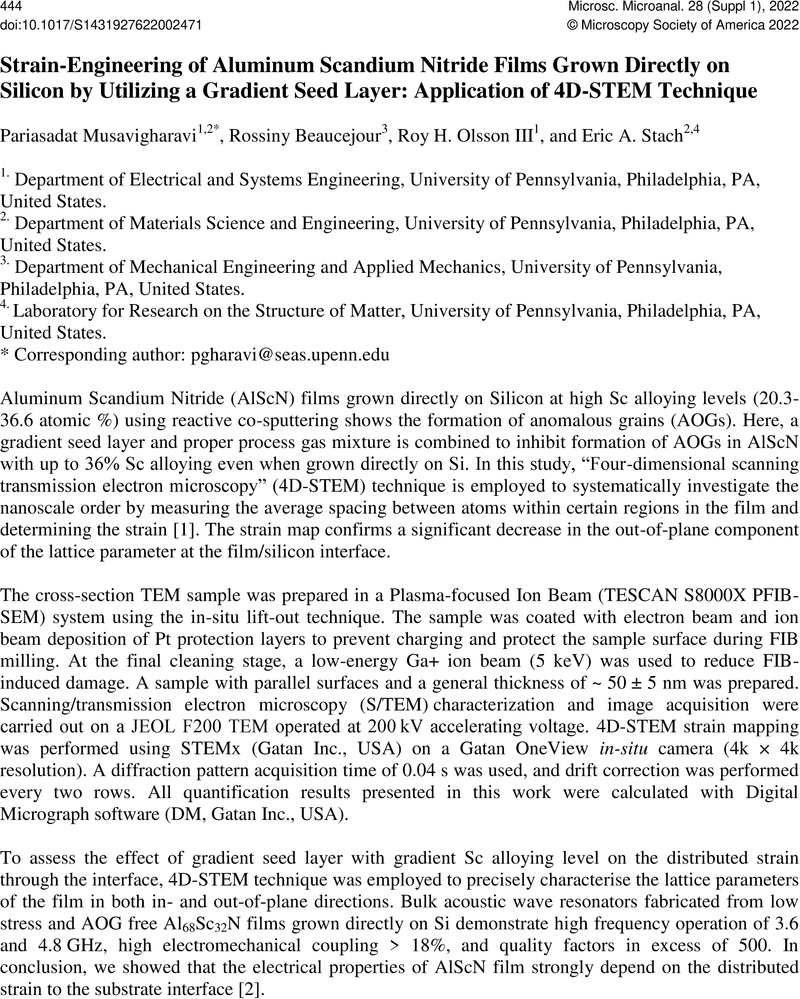The authors acknowledge funding from the NSF CAREER Award (1944248) and in part The Defense Advanced Research Projects Agency (DARPA) Small Business Innovation Research (SBIR) under award HR0011-21-9-0004. This work was carried out in part at the Singh Center for Nanotechnology at the University of Pennsylvania, a member of the National Nanotechnology Coordinated Infrastructure (NNCI) network, which is supported by the National Science Foundation (Grant No. HR0011-21-9-0004).
Google Scholar